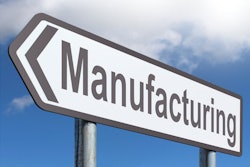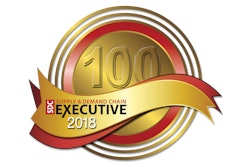
February 16, 2011 — Supply chain management has always been important. However, its relative importance is on the rise, particularly as senior executives are becoming more focused on supporting a return to growth.Trends and realities in the global economy are thrusting supply chain management to the forefront of business strategy. Executives are realizing that supply chain characteristics and capabilities ultimately define how a business can and should operate. As this new state of affairs takes hold, supply chain managers must both embrace and act upon an evolved and elevated role in strategy formation, leadership and value creation.Today's volatile markets have forced companies to drive tremendous change and align costs with revenue. Typically functionally focused, this rationalization of resources, combined with the never-ending drive to realize greater value, is producing extraordinary and impactful results.Though profitability is returning, top-line growth remains elusive — and by most forecasts may remain so for the foreseeable future. Given this realization, business leaders are now seeking to achieve the next generation of productivity gains. In particular, they are upping the ante in terms willingness to innovate in areas such as how and where work gets done.To achieve this next order of efficiency, companies are moving away from a purely functional focus. They are now taking a global view in terms of standardizing operating processes and/or leveraging end-to-end processes.It is critical for organizations to recognize that business performance is substantially governed by the supply chain. The supply chain is fast-becoming one of the core determinants of a company's business model. Organizations are now in an era where their operating model is being defined by its supply chain function.
Why Now? Recognizing Three Key Trends
A wide range of forces has been placing greater and broader demands on supply chains for decades. Everything from advances in collaborative technology to greater globalization raises the bar for supply chain management nearly incessantly. And today an uncertain global economy is exacerbating the need for still leaner inventory management as well as general cost consciousness both up and down the supply chain. The pressure on supply chains is approaching, or already exceeding, a type of critical mass. Success in business is now more dependent on the performance of the underlying supply chain than ever before. As for the forces behind this surging prominence — those creating the most pressure for a shift towards a more supply chain-centric business model — three in particular deserve greater exploration.
They are as follows:
1. Supply chain failures can visibly impact market valuation Just how much influence does the supply chain wield in terms of the success or failure of an organization? Asked to say where most value is created within their company, most executives would likely point to areas such as product development, customer service or marketing. But now change the question and ask which corporate activity generates the most value.
A whitepaper from Vinod R. Singhal, a professor of operations management at the DuPree College of Management at Georgia Institute of Technology, suggests that if there is one area where companies can ill-afford a miscue, indeed, that would be supply chain management. (See "Quantifying the impact of supply chain glitches on shareholder value" by Professor Vinod R. Singhal, DuPree College of Management at Georgia Institute of Technology and Professor Kevin Hendricks of the Richard Ivey School of Business, University of Western Ontario, Canada; Published by SAP, 2003.)Singhal and his research team looked at 838 supply chain stumble announcements appearing over a 10 year period in the Wall Street Journal and Dow Jones News Service. The group's research shows that in terms of frequency of such missteps, the most common include parts shortages (25 percent of instances), followed by customer requested changes, problems with product launches or production problems. What the group learned is that, on average, such stumble announcements result in a nearly 11 percent initial hit to the company's value as measured by stock price. And after adjusting for industry and market movements, the total shareholder value loss associated with a glitch can be as high as 25 percent. What this highlights is the degree to which a company's business strategies and objectives are entwined with its supply chain. Any failure to link objectives and outcomes to the realistic capabilities of the supply chain can lead to failure.
The corollary: To the degree companies can achieve greater alignment and cooperation between business strategy and supply chain operations execution, the chances for success increase.
2. For the C-suite, predictability is invaluable
The above study shows that reliability is a profound driver of a corporation's valuation. But reliability means more than getting a product to a certain place by a certain time or having a service performed when and as needed. It also encompasses predictability, which means the right product or service, the right quantity and the right quality all at the right time as intended and expected by your customers. Both reliability and predictability are essential if supply chains are to run in an optimized manner.In short, a company must deliver on all its promises, both internally and externally. View the stakeholders of any business: Customers want zero defects in all aspects of the relationship. That's not just the quality of core products or services themselves but the entire service bundle, including logistics, implementation, financing and billing. But this predictability and reliability are also critical to internal stakeholders. Procurement, finance, manufacturing, sales — virtually all internal functions can perform more capably and more efficiently when variances are minimized.And, by corollary, in the absence of predictability, costs multiply. Uncertainty and unpredictability are major drivers of cost within a supply chain. For example, if a business postulates sales of 100,000 units of a new product line, the supply chain organizes and expends resources to supply this level of demand. But if there is a delay in the product launch, the supply chain must hold more product in inventory for longer than expected, increasing working capital costs. Alternatively, what if there is a last-minute alteration of product or service specifications? Again, this leads to higher production costs as well as raises the potential for lapses in product quality.Over the short term, such pain will be absorbed at varying points along the value chain. The pain for the company itself that fails to deliver predictability can be temporarily masked. Suppliers may absorb lower margins or customers may accept diminished product quality or supply unpredictability "for now." But in the long run, uncertainty introduces costs that inevitably damage the entire value chain. As already highlighted by the Singhal/Hendricks study, the hard reality is that suppliers and other external groups such as analysts and investors all place great value on a company being able to perform as promised.
Reliability and predictability, as many leading companies have now concluded, are essential to building a sustainably profitable business model. Improving performance in these areas, it is further realized, is best accomplished through not only closer integration of supply chain with ongoing operations but also an expanded role in corporate development and strategic planning.
For example, a consumer products manufacturer is in the process of transforming its operating focus and strategy to optimize the reliability of manufacturing processes. Greater reliability, the company recognizes, results in stronger margins, a byproduct from greater efficiency in everything from production runs to inventories and supplier costs.
But this focus on manufacturing reliability has implications on sourcing strategies, product development, product lifecycle management, marketing strategy and certainly pricing. The realization for the company is that operating executives need more say in coordinating decisions across a range of functional areas. In effect, there is a need to create guidelines that can align strategic constraints with opportunities. In essence, decisions made in marketing, sales, product development, R&D and a host of other functions need to factor in supply chain optimization.
3. Achieving global growth requires a reliable and truly globalized supply chain
Today's supply chains are increasingly global, technology-infused, collaborative and interactive. Driven by global economics and largely enabled by advances in collaborative technologies, high performing businesses rely increasingly on a more complex and globalized end-to-end supply chain. It is now common for product and service inputs and processes to emanate from many dozens or even many thousands of related and external providers scattered across myriad states, nations and continents.
Concurrently, product and service bundles themselves tend to require extraordinary degrees of technological sophistication. This is not to say that every product or service is itself composed of high technology. Rather, the rising complexity of product/service development and delivery more often than not involves more skill sets than could be contained within a single business entity. Technological sophistication is now essential not only from conception but also through development, manufacture, quality control, post-sale customer service, product feedback and then back to product refinement/re-conception. This added product/service complexity forces companies to pursue ever broader swaths of capabilities, thus placing further demands on end-to-end supply chain processes.
At its core, a supply chain must be well-defined, well-informed and intelligent. This means being able to exercise decision making or discretion at the most influential moments in any business process. The function must also exude flexibility, interconnectivity, customer-centricity, end-to-end transparency and whatever additional attributes might be appropriate for a given business strategy, customer base or industry.
Given the current state, however, there is an obvious acceleration in the trend towards globalization-driven efficiency. Largely enabled by tremendous advances in collaborative technologies and networking, companies are rapidly evolving from the state of maintaining a mere global presence to functioning as full-blown global operating companies. It is an inescapable reality that leading companies must now seek out low-cost providers wherever they reside. Similarly, the technologies needed to enable such global collaborations advance incessantly. As such, the conditions necessary for companies to build interconnected, collaborative, dynamic and responsive global supply environments are now omnipresent.
Additionally, as more companies begin operating globally, pressure for even more supply chain globalization builds. For example, in the past, many businesses might have been able to get away with maintaining multiple, often regional, but generally competing brands. But as more customers globalize, their procurement operations seek to consolidate supply operations on a global basis. As such, they begin to question managing relationships with multiple providers the world over who, in the end, all belong to the same corporate family.
Companies are fast evolving towards a world of global sourcing and operation. The success of their business models will be determined by how swiftly and capably they can gather inputs from anywhere in the world in order to deliver a product or service to any given customer anywhere in the world. Companies must become adept at identifying and managing vast ecosystems of internally and externally generated product and service components on a global basis. They must become expert in building flexibility in capacity while maintaining reliability, predictability and quality.
The ability to manage a global supply chain is now an essential core competence. In the end, the greater the influence of globalization, the more a company's business model is defined by its supply chain capabilities.
Building a Response
Building an effective response — raising capabilities within the supply chain, as well as elevating its role within strategic planning — will not happen overnight. Rather, businesses leaders and their supply chain organizations need to begin to view this transformation as a series of continuous, iterative improvements. The starting point is to begin placing greater emphasis on predictability. The supply chain function must improve its ability to gather all needed information for making choices in real time that absolutely minimize surprises for their organizations. The flow of such information must be both upstream and downstream. In other words, supply chain executives should be as well-informed regarding the latest actual orders and forecasts of key customer demand as they are of the cost/volume tradeoffs of production runs from key suppliers.
Supply chain managers should also adopt an analytical perspective. Examine performance across the entire supply chain. Relate changes in variables such as demand and production/maintenance costs leading to better decision-making in terms of product development, product lifecycles, capacity planning and other key components of value creation. Soon, supply chain managers will be demonstrating, through action, how greater predictability leads to greater optimization and in the process adds enormous value to a business. They will use fact-based approaches to discern overly optimistic demand forecasts from more likely scenarios. They will better manage productions runs based on global, as opposed to regional demand, leading to greater efficiency. Moving from success to success, the function will gradually become so integral to the business that its views and processes become invaluable, if not defining. A company's supply chain dexterity will begin to inform everything from product development and lifecycle management to marketing and customer relationship management — and vice-versa. This is not to say that supply chain issues will emphatically define corporate strategy. Rather, this is an iterative process whereby the two, by increments, evolve into a more symbiotically optimized balance. Business strategy becomes both defined and enabled in terms of supply chain capabilities. Where business strategy needs to adapt to supply chain realities, it will. And where supply chain capabilities need to evolve to meet business needs, they will.
Conclusion: A New Era
A new realization is taking hold: A company's supply chain defines its competitive capabilities. Companies now need to begin doing more in terms of aligning their business and supply chain strategies to create a stronger whole. In short, it is time to elevate the role of the function. Begin by accepting that supply chain reliability and predictability are fundamental drivers of business value. Missteps, research shows, destroy value. Meanwhile, advances in the achievement of greater reliability and predictability can streamline costs and deliver greater value across the whole of the value chain. Add to this, owing to its unique position, the supply chain function itself is ideally suited to play a profound role in nearly all aspects of value creation and preservation. A growing number of leading companies are affording their supply chain organizations with greater authority and responsibility for defining not only how the supply chain will operate but increasingly how their companies as a whole will operate. Not all such functions are currently suited for such a crucial, strategic role. Many will need to assume such a role gradually, earning their way one step or one success at a time. But in the face of all the factors already cited, the trajectory is inescapable. As the economy continues to change, an organization's success will be increasingly contingent on the degree of alignment between its business strategies and its underlying supply chain capabilities. Supply chain may not necessarily drive the formation of any fundamental value proposition. However, given its role in delivering on promises, it must also become more active in defining those promises. In other words, businesses must begin to define core business strategies in terms of their supply chain. The era of competition driven by supply chain capabilities has arrived.
SIDEBAR: Questions for Reflection
Supply chain managers should ask themselves:
- To what extent are lapses in predictability or a lack of visibility adding to costs in the supply and overall value chains?
- If given the forum, what performance-enhancing insights could you provide to strategic planning, marketing, business development, R&D or other corporate functions?
- How analytical — how fact-based — are your analyses?
- What "quick wins" could be readily implemented?
C-suite executives should ask themselves:
- What are you doing to promote greater visibility/predictability along the value chain?
- Do our supply chain executives have adequate say in strategic planning?
- Are we introducing the supply chain perspective early enough in planning cycles to improve the quality of decision making?
SIDEBAR: A Unique Perspective
The trends discussed in the accompanying article strongly suggest that supply chain executives need to be vastly more engaged in strategy and planning. But there are even more reasons why leading companies should elevate the function's prominence. One of the most critical of these is the interrelationship between the customary drivers of business value, and a typical supply chain's relationship to each of these drivers. Enterprise value can be described as a function of sales growth, cash flow, ongoing capital requirements and net working capital requirements. An organization can improve its valuation through such paths as a growth in revenue, an increase in relative cash flow, an increase in capital efficiency and/or a reduction in working capital requirements. Note immediately that supply chain activities have significant impact on all these variables and desired outcomes. There are also many obvious factors beyond an enterprise's span of control that can impact valuation at any point in time. These include the moves of external competitors, technological changes or other economic or political factors impacting demand. Yet at the same time, there are many, often less obvious, drivers that are nearly entirely controllable. Foremost of these is the value that can be derived from taking steps to introduce greater operating "predictability" and/or "reliability." Companies in the past may have organized around greater flexibility in demand and production. And while there may be business reasons that call for so much flexibility, these must be weighed against the supply chain challenges. In many cases, it will be learned that the added sales that might accrue are outweighed by the ongoing risks, costs and lower margins that go hand in hand with so much variability. This is not to say that supply chain issues must dictate business strategies. Rather, it means that companies need to enter into continuous, analytical and fact-based analysis of their business strategies, fully cognizant of both downstream (customer) and upstream (supply chain) issues. It is only by understanding impacts at all ends of this value chain that companies can make the best strategic choices. Unquestionably, companies need greater alignment.



![Pros To Know 2026 [color]](https://img.sdcexec.com/mindful/acbm/workspaces/default/uploads/2025/08/prostoknow-2026-color.mduFvhpgMk.png?auto=format%2Ccompress&bg=fff&fill-color=fff&fit=fill&h=100&q=70&w=100)







![Pros To Know 2026 [color]](https://img.sdcexec.com/mindful/acbm/workspaces/default/uploads/2025/08/prostoknow-2026-color.mduFvhpgMk.png?ar=16%3A9&auto=format%2Ccompress&bg=fff&fill-color=fff&fit=fill&h=135&q=70&w=240)





